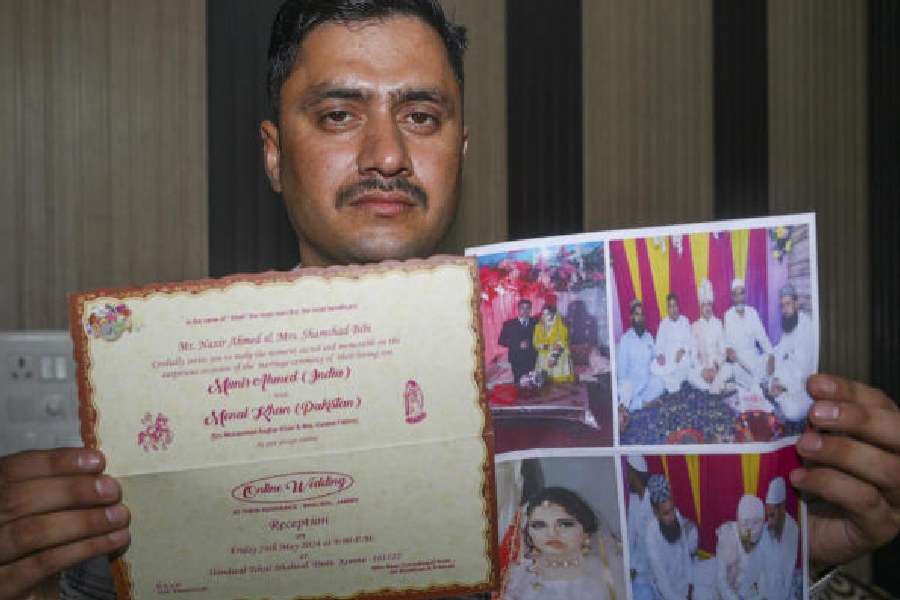 |
| Model Devdutta at the Scotch tasting session at ITC Sonar Bangla. Picture by Rashbehari Das |
Next time you order your Scotch, you better know your grain whisky from your malt. That was the intended message behind the Sense your Scotch session conducted by Arun Seth, vice president, Allied Domecq Spirits and Wine for a select audience at ITC Sonar Bangla on Thursday.
J&B Rare, Ballantine’s, Teacher’s 50, Johnny Walker and Laphroaig were the tipsy tools to tell the difference between grains, malts and blends. Though a happy mix, it wasn’t meant to be a tippler’s delight. A small sip at a time was all that was allowed for one had to keep one’s wits about to be able to see, smell and taste the difference.
Single grain whisky fresh out of an oaken cask stood at the bottom of the grain, blend, malt spectrum. The clear, gentle grain variety is odourless and leaves no lingering after taste. A wheat extract, single grain whisky is not very popular in Asia. “Probably it is considered too gentle a drink to be taken seriously by whisky drinkers,” said Seth.
Single malts, a barley extract and the product of one distillery, don’t fare any better on the popularity charts. “Single malt is more of an acquired taste than a habitual one,” said Seth. Pungent brands like Laphroaig are an exception. The pungency here works in its favour. “The more pungent the flavour, greater the loyalty to the brand,” added Seth.
It’s blends like Johnny Walker Red Label and Teacher’s 50 that combine the best of both worlds to come up with fruity, smoky flavours leaving a definite long after taste. “Blended whiskies form 95 per cent of world-wide whisky consumption,” observed Seth.
A blended whisky involves anywhere between 10 to 50 blends from different distilleries, decided upon by a master blender. The age mentioned on a label is the age of the youngest whisky involved in the blend, which cannot be less than three years. “Below that age, a whisky can’t be labelled Scotch,” he explained.
The sip sojourn also led one to the distilleries of Scotland via slides and statistics revealing interesting trivia about the most sought after tipple in the world. While Scotch and Irish whisky along with bourbon and rye are the only four categories of whisky recognised by the US and the UK, the top five brands around the world are Johnny Walker Red Label and J&B Rare from the stable of Diageo, Ballantine’s from Allied Domecq, Grant’s from William Grant and Dewar’s White Label from Bacardi.
 |
The connoisseurs may choose the best, but they are pushed out of the top five sales bracket simply because they are more expensive.
Just as the good Scot spirit has continued to flow at the classiest bashes, the distilleries have resisted all winds of change. They are still run in more or less the same manner as they used to a 1,000 years ago, with most of the production procedures involving hand-held devices.
“The Scots are very superstitious. They see no need to change since they are doing so well,” laughed the expert. Despite all innovations, they have stuck to the old ways and laugh away the two per cent alcohol evaporation with every year of ageing as the “angel’s share” of the fun.
Nature returns the favour in the form of favourable climatic conditions, essential for a good brew. Clean, soft water and an abundance of peat or rotting vegetation referred to as the poor man’s coal adds to the smoky flavour of Scotch. All the factors add up to give Scotch its distinctive, winning flavours.










